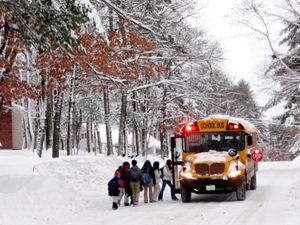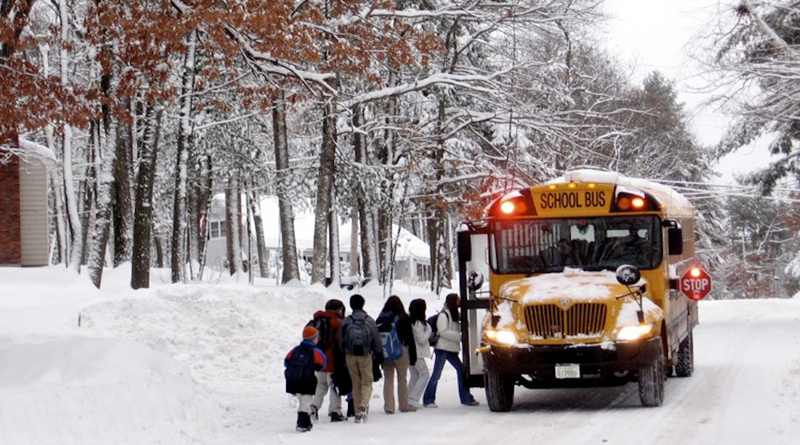Top Winter Maintenance Tips For School Facilities
By Steve Fountaine
Winter can be a difficult time of year for school populations. Subfreezing temperatures, snow and ice, and extended periods of darkness all challenge students, teachers and staff alike. School facility managers play a critical role, because their efforts are essential to keeping maintenance costs under control and maintaining a high level of safety and morale for everyone in the school all winter long.
Here are some top maintenance tips to keep your school safe and welcoming this winter:
Create a Slip-Prevention Plan
If your school is in a cold climate, dealing with icy conditions is critical. However, even southern states get snow and freezing weather from time to time. Especially if icy weather is not the norm in your area, you’ll want to think ahead and prepare for the worst. Some things to consider include:
- Snow removal: Be sure to have a plan in place for how to deal with snow. What equipment will you use, and where will you put snow removed from sidewalks and parking lots? If you expect heavy snow, mark the edges of your property with light-reflective poles so plow drivers know their boundaries. Also, plan to remove any accumulated snow promptly to prevent accidents.
- De-icers: Chemical de-icers are virtually essential in slippery conditions. Rock salt is the most cost-effective, but it can harm landscape plantings, damage concrete and create a mess when it is tracked inside. Alternatives are available, but you will need to research cost effectiveness. Regardless of what you use, have a plan in place for storage, and be sure to use as directed to prevent waste.
- Entry mats: Snow, slush and salt wreak havoc on floors and can create dangerous, slippery conditions. Entry mats can significantly reduce mess and accidents. Use both exterior and interior mats at every entrance, sized to encourage three full paces on the mat before and after the threshold.
- Roofs and awnings: Check roofs and eaves for snow load and ice buildup, and take steps to prevent hazardous conditions and a potential roof collapse. Falling icicles in particular can be hazardous to passersby — and they also indicate energy loss in a building.

Photo Credit: Gary Lerude
Maintain for Energy Efficiency
The greater the difference between inside and outside temperatures, the better the potential for energy savings. Here are some strategies to consider:
- Air seal and weatherize your building: Do this before cold weather arrives to reduce heat loss and improve occupant comfort.
- Use programmable thermostats: Adjusting set points to 68 degrees during occupied hours, and 7 to 10 degrees lower when the building is unoccupied will save you approximately 1 percent on your heating bill per degree per 8-hour period.
- Maintain the HVAC system properly: Before cold weather hits, inspect and service your entire HVAC system, including changing air filters.
- Inspect water pipes: Install insulation on any un-insulated hot water pipes to save energy. Cold water pipes should be protected from potential freezing conditions.
Focus on Visibility
During the winter, students often arrive at and/or leave school in the dark. The following tips will help keep everyone safe at these times:
- Inspect and replace: Inspect outdoor lighting and replace failing bulbs and/or fixtures. Add additional outdoor lighting if necessary.
- Trim overgrown shrubbery: This discourages lurkers and enables clear visibility for drivers. This can be done any time during the dormant season.
- Mark snow-covered crosswalks: Do this with signs — or use crossing guards.
- Practice outdoor safety: Encourage students to wear reflective outdoor clothing. Also educate them on safe conduct through parking lots and when crossing streets after dark.
Prevention is a huge part of winter school maintenance. This is true not only when school is in session, but during breaks as well. It’s a good idea to schedule daily walk-throughs during school breaks to make sure the heat remains on; refrigerators, freezers and other equipment are still working; and to keep an eye out for frozen pipes and other pending crisis situations.
In session or not, forethought will go a long way toward keeping your school facility safe, energy-efficient and welcoming throughout the winter and beyond.
Steve Fountaine is owner of Premiere Works, which serves the Washington, D.C., southern Maryland and northern Virginia areas.

